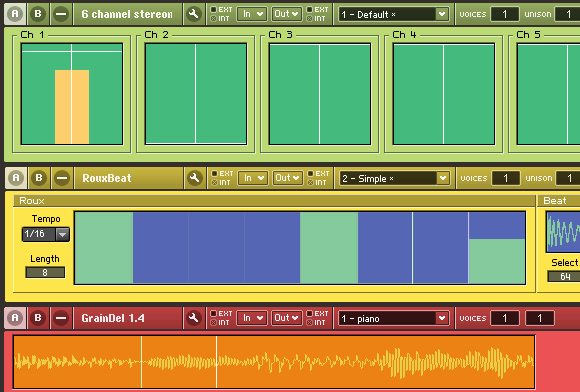This is part of a set of tutorials I did for Peter Kirn’s Kore site back in 2008 – we were creating materials that highlighted Native Instruments products and how they could be used in Kore. Well, the product is defunct and the old site is down, so here is the first in a series on the Roux sequencer macro, showing how it can be used to manipulate the read position in a basic grain delay. Also see here where I’ve built an updated version of the Roux macro that is used in this tutorial.
Update: hey, this is back online now at kore.noisepages.com! Awesome!
Here is an index to the series:
- Part 1 – introduction
- Part 2 – the X+ module
- Part 3 – the event table
- Part 4 – the snap array
- Part 5 – the mouse area
In French cooking, there’s a sauce base called a roux (pronounced “roo”) that is the foundation of bechamel and other sauces. This is a sequencer macro that is the equivalent for programming sequenced instruments in Reaktor – you can take it in any direction from here. In its most basic form it can send velocity information to trigger percussion, or modulate instrument parameters like cutoff and resonance. With a few simple changes it becomes a pitch sequencer.
I decided to teach how to use the roux step sequencer before diving into the guts of the Frankenloop because understanding this will make that much easier to untangle. Besides, this is a more modular-ready macro, easily popped into anything else you happen to be building or toying with – anything that could use some sauce, really.
I decided to teach how to use the roux step sequencer in a practical way before diving into the guts because understanding this will make that much easier to untangle. Besides, this is a more modular-ready macro, easily popped into anything else you happen to be building or toying with – like the granular delay we’ve been working on. Anything that could use some sauce, really.
In part one, we look at two uses of this versatile basic ingredient. Download the ensemble and follow along with the video tutorial.
Roux Sequencer Macro for Reaktor from Create Digital Media on Vimeo.

